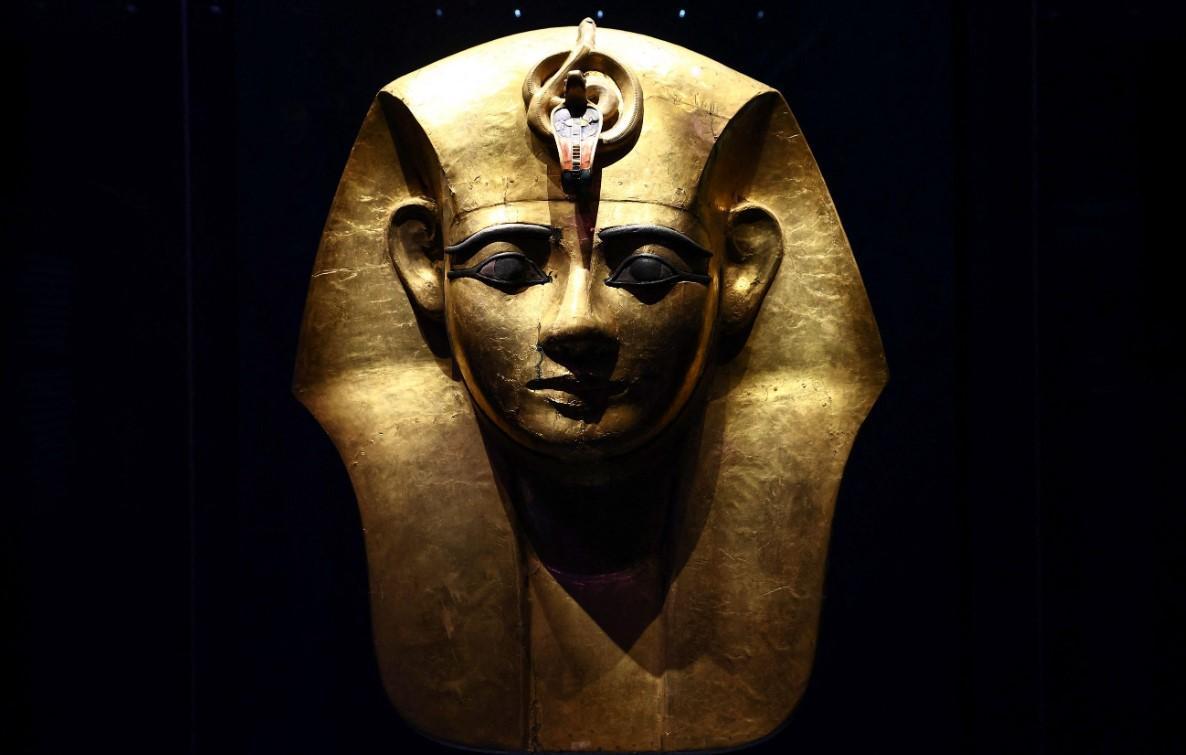
A mega exhibition honoring the Egyptian pharaoh Ramses II opened on April 7 in Paris, with his sarcophagus making a rare voyage abroad for the occasion.
The ornate coffin will be on show to the public at the Grand Palais museum in the French capital through Sept. 6.
Benedicte Lhoyer, scientific advisor to the exhibition, told AFP the "exceptional" loan was thanks to "an unprecedented cooperation between France and Egypt."
The Ramses II exhibition is on a tour that includes the United States and Australia this year, but only France is receiving the sarcophagus, in recognition of the assistance from French scientists, who helped save the mummy from decay following a previous visit to Paris in 1976.
The mummy itself has stayed behind this time since Egyptian law now forbids transporting royal mummies abroad.
Ramses II, also known as Ramses the Great, ruled for more than 60 years during the 13th century B.C. and oversaw major military conquests and monumental construction projects, while also finding time to father more than 100 children.
"In short, he was an extraordinary king," said Lhoyer.
The yellow-painted cedar-wood sarcophagus, which depicts the recumbent king in bright colors with his arms crossed on his chest holding a sceptre and whip, was not actually Ramses II's original coffin.
Inscriptions on the sarcophagus' sides detail how his body was moved three times from 1070 B.C., after his tomb in Luxor's Valley of the Kings was raided by grave-robbers.
Its final resting place was discovered almost three Millenia later in 1881, just as it too was being pillaged.
The immersive exhibition in Paris also features an abundance of statues, masks and jewelry from the period - more than 180 objects in total - as well as a 3D recreation of one of the king's battles against the Hittite empire.
Egyptian relics have proved a hit in the past -- some 1.4 million people came to see an exhibition about Tutankhamun in Paris four years ago.
"Ramses II defeated time. Like Tutankhamun, he has become immortal," said Lhoyer.
Ramses came to Paris for a mummy makeover
In 1976 the French capital hosted Ramses II when his 3,000-year-old mummy was brought to Paris for a once-in-a-deathtime makeover.
The story of how France literally saved the skin of Ramses II is one of the little-known chapters in Egyptology.
Then French president Valery Giscard d'Estaing convinced his Egyptian counterpart Anwar Sadat to temporarily part with the mummy by promising Ramses a reception "fit for a king." And he meant it.
When a French military transport plane bearing the remains of the venerable Egyptian leader touched down at Le Bourget airport in Paris on September 26, 1976, the red carpet had been rolled out, the Republican Guard were standing to attention and a government minister was waiting to greet him.
Contrary to a popular rumor Ramses did not travel on a passport with a picture of his 3,200-year-old mug - but it would not have been out of keeping with the pomp and ceremony.
In a sign of the abiding French fascination with ancient Egypt, the welcoming ceremony was carried live on national television.
Onboard the plane with Ramses was French archaeologist Christiane Desroches Noblecourt from the Louvre museum, who travelled to Cairo to accompany Ramses on the journey, submerging the mummy in a bath of plastic balls to cushion it from any knocks.
Mummy needs a makeover
Once in Paris, the mummy did not head to the exhibition, but instead whisked off for urgent medical attention.
The remains of the pharaoh, who was in his nineties when he died in 1213 BC, were starting to show their age.
When the mummy of Ramses II was discovered in 1881 in the Valley of the Kings near Luxor, it was in remarkably good condition.
But contact with fresh air brought creeping damage from parasites and fungi and a major restoration was needed.
The alarm was first raised in 1975, when a French archaeologist doing research at the Egyptian Museum in Cairo discovered the mummy's fungal affliction.
When the Ramses II exhibition opened in Paris, Sadat finally accepted France's offer of a restoration.
The delicate job of restoring the mummy to full health was entrusted to conservationists at the Musee de l'Homme anthropology museum, which sits on a hill across the Seine River from the Eiffel Tower.
Pictures from the era show a phalanx of scientists in white coats gathered around the mummy's bedside in a sterile room.
After X-raying the brittle body and subjecting it to a battery of biological and chemical tests, they got down to work, restoring tissues and creating new bandages before sending Ramses off for radiation treatment to the French Atomic Energy Commission.
After eight months in intensive care, Ramses was "set for a new round of immortality," AFP wrote.
On April 10, 1977, the rejuvenated pharaoh was flown back to Cairo and put back on display alongside other royal mummies in the Egyptian Museum.